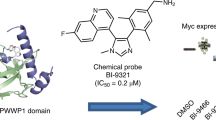Abstract
CK2 represents an oncology target scientifically validated. However, clinical research with inhibitors of the CK2-mediated phosphorylation event is still insufficient to recognize it as a clinically validated target. CIGB-300, an investigational peptide-based drug that targets the phosphoaceptor site, binds to a CK2 substrate array in vitro but mainly to B23/nucleophosmin in vivo. The CIGB-300 proapoptotic effect is preceded by its nucleolar localization, inhibition of the CK2-mediated phosphorylation on B23/nucleophosmin and nucleolar disassembly. Importantly, CIGB-300 shifted a protein array linked to apoptosis, ribosome biogenesis, cell proliferation, glycolisis, and cell motility in proteomic studies which helped to understand its mechanism of action. In the clinical ground, CIGB-300 has proved to be safe and well tolerated in a First-in-Human trial in women with cervical malignancies who also experienced signs of clinical benefit. In a second Phase 1 clinical trial in women with cervical cancer stage IB2/II, the MTD and DLT have been also identified in the clinical setting. Interestingly, in cervical tumors the B23/nucleophosmin protein levels were significantly reduced after CIGB-300 treatment at the nucleus compartment. In addition, expanded use of CIGB-300 in case studies has evidenced antitumor activity when administered as compassional option. Collectively, our data outline important clues on translational and clinical research from this novel peptide-based drug reinforcing its perspectives to treat cancer and paving the way to validate CK2 as a promising target in oncology.



Similar content being viewed by others
Abbreviations
- MTD:
-
Maximal tolerated dose
- DLT:
-
Dose-limiting toxicity
- CIGB-300-B:
-
CIGB-300 conjugated to biotin
- BFS:
-
Bovine fetal serum
- TBB:
-
4,5,6,7-Tetrabromobenzotriazole
- PBS:
-
Phosphate buffer solution
- RIPA:
-
Radioimmunoprecipitation assay
- HPV:
-
Human papillomavirus
- 99Tc:
-
Technetium-99
- MRI:
-
Magnetic resonance images
References
Baselga J (2006) Targeting tyrosine kinases in cancer. Science 312:1175–1178
Kantarjian HM, Cortes J (2006) New strategies in chronic myeloid leukemia. Int J Hematol 83:289–293
Meggio F, Pinna LA (2003) One-thousand-and-one substrates of protein kinase CK2? FASEB J 17:349–368
Pagano MA, Cesaro L, Meggio F, Pinna L (2006) Protein kinase CK2: a newcomer in the druggable kinome. Biochem Soc Trans 34:1303–1306
Ahmed K, Gerber DA, Cochet C (2002) Joining the cell survival squad: an emerging role for protein kinase CK2. Trends Cell Biol 12:226–230
Barz T, Ackermann K, Dubois G, Eils R, Pyerin W (2003) Genome-wide expression screens indicate a global role for protein kinase CK2 in chromatin remodeling. J Cell Sci 116:1563–1577
Wang G, Ahmad K, Harris NH, Ahmed K (2008) Impact of protein kinase CK2 on inhibitor of apoptosis proteins in prostate cancer cells. Mol Cell Biochem 316:91–97
Kramerov AA, Saghizadeh M, Caballero S, Shaw LC, Calzi SL, Bretner M, Montenarh M, Pinna L, Grant MB, Ljubimov AV (2008) Inhibition of protein kinase CK2 suppresses angiogenesis and hematopoietic cell recruitment to retinal neovascularization sites. Mol Cell Biochem 316:177–186
Landesman-Bollag E, Song DH, Romieu-Mourez R, Sussman DJ, Cardiff RD, Sonenshein GE, Seldin DC (2001) Protein kinase CK2: signaling and tumorigenesis in the mammary gland. Mol Cell Biochem 227:153–165
Landesman-Bollag E, Channavajhala PL, Cardiff RD, Seldin DC (1998) P53 deficiency and misexpression of protein kinase CK2α collaborate in the development of thymic lymphomas in mice. Oncogene 16:2965–2974
Piazza FA, Ruzzene M, Gurrieri C, Montini B, Bonanni L, Chioetto G, Di Maira G, Barbon F, Cabrelle A, Zambello R, Adami F, Trentin L, Pinna L, Semenzato G (2006) Multiple myeloma cell survival relies on high activity of protein kinase CK2. Blood 108:1698–1707
Guerra B, Issinger OG (2008) Protein kinase CK2 in human diseases. Curr Med Chem 15(19):1870–1886
Sarna S, Pinna L (2008) Protein kinase CK2 as a druggable target. Mol BioSyst 4:889–894
Trembley JH, Chen Z, Unger G, Slaton J, Kren BT, Van Waes C, Ahmed K (2010) Emergence of protein kinase CK2 as a target in cancer therapy. BioFactors 96:187–195
Serno S, Salvi M, Battistutta R, Zanotti G, Pinna LA (2005) Features and potentials of ATP-site directed CK2 inhibitors. Biochim Biophys Acta 1754:263–270
Slaton JW, Unger GM, Sloper DT, Davis AT, Ahmed K (2004) Induction of apoptosis by antisense CK2 in human prostate cancer xenograft model. Mol Cancer Res 2:712–720
Siddqui-Jain A, Drygin D, Streiner N, Chua P, Pierre F, O’Brien SE, Bliesath J, Omori M, Huser N, Ho C, Proffitt C, Schwaebe MK, Ryckman DM, Rice WG, Anderes K (2010) CX-4945, an orally bioavailable selective inhibitor of protein kinase CK2, inhibits prosurvival and angiogenic signaling and exhibits antitumor efficacy. Cancer Res 70:10288–10298
Perea SE, Reyes O, Puchades Y, Mendoza O, Vispo NS, Torrens I, Santos A, Silva R, Acevedo B, López E, Falcón V, Alonso DF (2004) Antitumor effect of a novel proapoptotic peptide that impairs the phosphorylation by the Casein Kinase 2 (CK2). Cancer Res 64:7127–7129
Solares AM, Santana A, Baladrón I, Valenzuela C, Diaz J, Ariosa JM, González CA, Diaz A, Castillo D, Gómez R, Alonso DF, Herrera L, Perea SE, Acevedo BE, López-Saura P (2009) Safety and preliminary efficacy data of a novel casein kinase 2 (CK2) peptide inhibitor administered intralesionally at four dose levels in patients with cervical malignancies. BMC Cancer 13:146
Fields R (1990) Nobel, solid phase peptide synthesis utilizing 9-fluorenylmethoxycabonyl amino acid. Int J Pept Protein Res 35:161–214
Piñol-Roma S (1999) Association of nonribosomal nucleolar proteins in ribonucleoprotein complexes during interphase and mitosis. Mol Biol Cell 10:77–90
Acknowledgments
This study was supported by HeberBiotec SA and Biorec.
Author information
Authors and Affiliations
Corresponding author
Rights and permissions
About this article
Cite this article
Perea, S.E., Baladron, I., Garcia, Y. et al. CIGB-300, a synthetic peptide-based drug that targets the CK2 phosphoaceptor domain. Translational and clinical research. Mol Cell Biochem 356, 45–50 (2011). https://doi.org/10.1007/s11010-011-0950-y
Received:
Accepted:
Published:
Issue Date:
DOI: https://doi.org/10.1007/s11010-011-0950-y




